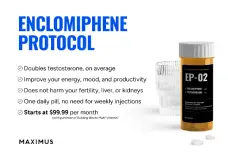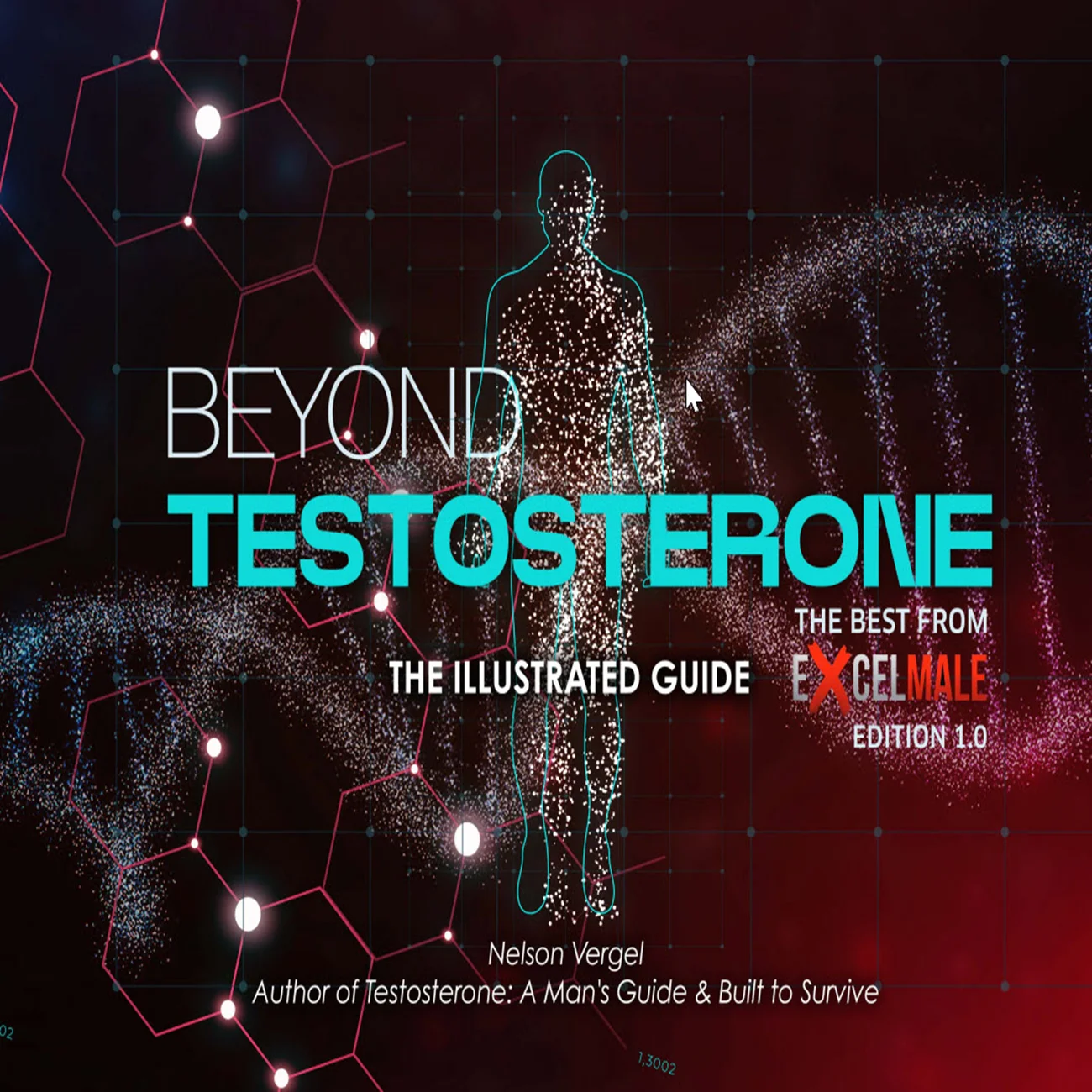Pharmacokinetics of testosterone cream applied to scrotal skin
True that the absorption is fast and the 25 mg dose was shown to maintain physiological levels for 16 hrs.
Pharmacokinetics of testosterone cream applied to scrotal skin
Transdermal delivery of testosterone was first reported in the late 1980s (Findlay et al., 1987). Transdermal absorption depends on testosterone forming a local depot in the stratum corneum, the dead skin cell layer which limits permeability of small molecules through the skin, to allow for prolonged testosterone delivery (Barry, 1983).
.
The first transdermal testosterone product, an adhesive scrotal patch (Findlay et al., 1987; Behre et al., 1999), was discontinued because of poor acceptability arising from the need for scrotal shaving, dermal irritation and poor adhesion when wet and elevated circulating DHT. Subsequently, non-scrotal patches were developed for application to truncal skin (Meikle et al., 1996; Arver et al., 1997), but they feature a generic limitation of application site irritation (as a result of necessary inclusion of absorption enhancers) leading to a high rate of skin reactions (Jordan et al., 1998) including even severe burn-like skin reactions (Bennett, 1998). Transdermal testosterone gels are intended for application to truncal but not genital skin and feature low rates of dermal irritation (Handelsman, 2012), but risk topical transfer to women (de Ronde, 2009) and children (Martinez-Pajares et al., 2012) in intimate contact with the patient.
Yet, scrotal skin is advantageous for transdermal testosterone delivery as it has the thinnest stratum corneum (Smith et al., 1961; Ya-Xian et al., 1999), high steroid permeability (Wester & Maibach, 1989) many times greater than non-scrotal skin (Lin et al., 1999), and minimizes the risk of passive topical transfer to others. The present dose ranging study aimed to determine the pharmacokinetics of testosterone in an alcohol-free cream formulation (Wittert et al., 2016) when administered to the scrotal skin.
MATERIALS AND METHODS
This was a single-center, three-phase cross-over pharmacokinetic study of three single doses in random sequence of testosterone cream [AndroForte 5, 5% w/v (50 mg/mL) testosterone cream; Lawley Pharmaceuticals, West Leederville, Australia] administered to healthy volunteers. To evaluate the pharmacokinetics of exogenous testosterone in eugonadal volunteers, endogenous testosterone production was suppressed throughout the study by injection of nandrolone decanoate. Healthy male volunteers aged 18–50 years were recruited by advertising and reimbursed for their time and travel costs to participate in the study.
The primary endpoint was serum testosterone concentrations over 16 h measured by liquid chromatography, tandem mass spectrometry (LC-MS). The secondary endpoints were serum dihydrotestosterone (DHT) and estradiol (LC-MS) as well as tolerability
Each eligible, consenting participant was administered three single doses of testosterone cream in random sequence on different study days with at least 2 days wash-out period between studies.
The testosterone doses were 50 mg (1 mL cream), 25 mg (0.5 mL cream) and 12.5 mg (0.25 mL cream) each drawn from the same tube for each participant with the volume (dose) of testosterone cream measured using 1 mL insulin syringe and verified by a separate investigator. A venous cannula was inserted to obtain three pre-dose baseline blood samples at 15, 5 min and immediately prior to application of the testosterone cream which was applied at 08:00 to the scrotum by the participant using a gloved hand. Blood sampling was then further undertaken at 1, 2, 3, 4, 5, 6, 7, 8, 9, 10, 12, 14, and 16 h post-cream application. Serum was stored frozen (20 °C) until assay in a single batch. In addition, venous and finger-prick blood samples were spotted onto filter paper at 0, 4, 8, 12, 16, and 24 h and stored at room temperature in sealed plastic bags. To convert ng/mL to ng/dL, multiply ng/mL by 100. To convert ng/mL to SI units (nM) multiply by 3.47 for testosterone and 3.45 for DHT and to convert pg/mL to SI units (pM) multiply by 3.68 for estradiol.
RESULTS
Administration of testosterone to the scrotal skin produced a swift increase in serum testosterone with significant effects of dose (p < 0.0001), time (p = 0.003) and the time x dose interaction (p = 0.04) (Fig. 1). After administration of testosterone, serum DHT concentrations demonstrated significant effects of time (p < 0.0001) but neither the dose (p = 0.35) nor the time x dose interaction (p = 0.08) had statistically significant effects on serum DHT. For serum estradiol, there was no significant effects of testosterone administration on dose (p = 0.057), time (p = 0.057) or their interaction (p = 0.60) (Fig. 2).
After testosterone administration, the peak concentration of serum testosterone was dose dependent with the time of peak being between 1.9 to 2.8 h after doses (Table 2). Serum DHT rose to a peak concentration between 1.0 and 1.4 ng/mL (3.5–4.8 nM) between 4.1 and 5.6 h after testosterone administration, but the peak times and concentrations were not dose dependent. Using data from pooling the three testosterone doses, the estimated peak serum DHT concentration was 1.2 ng/mL (4.1 nM) and occurred at 4.9 h. When time of peak was determined empirically, there were similar trends to later time of peak concentration of serum DHT compared with serum testosterone (Table 2). Serum estradiol did not display any significant changes in time of peak or of peak concentrations with testosterone dose (Fig. 3).
All doses were well tolerated without complaint of skin irritation or discomfort
DISCUSSION
This study provides a pharmacokinetic profile of three doses of testosterone administered to the scrotal skin in a cream formulation.
Application of the testosterone cream produced a rapid rise in serum testosterone peaking around 2 h after administration with a dose-dependent peak concentration, but not any consistent relationship between time of peak and testosterone dose.
At the lowest dose (12.5 mg), the serum testosterone concentrations were maintained in physiological range for at least 12 hr and with the 25 mg dose maintained serum testosterone concentrations within the physiological range for nearly 24 h concentration.
SUMMARY
Scrotal skin is thin and has high steroid permeability, but the pharmacokinetics of testosterone via the scrotal skin route has not been studied in detail.
The aim of this study was to define the pharmacokinetics of testosterone delivered via the scrotal skin route. The study was a single-center, three-phase cross-over pharmacokinetic study of three single doses (12.5, 25, 50 mg) of testosterone cream administered in random sequence on different days with at least 2 days between doses to healthy eugonadal volunteers with endogenous testosterone suppressed by administration of nandrolone decanoate. Serum testosterone, DHT and estradiol concentrations were measured by liquid chromatograpy, mass spectrometry in extracts of serum taken before and for 16 h after administration of each of the three doses of testosterone cream to the scrotal skin. Testosterone administration onto the scrotal skin produced a swift (peak 1.9–2.8 h), dose-dependent (p < 0.0001) increase in serum testosterone with the 25 mg dose maintaining physiological levels for 16 h. Serum DHT displayed a time- (p < 0.0001), but not dose-dependent, increase in concentration reaching a peak concentration of 1.2 ng/mL (4.1 nM) at 4.9 h which was delayed by 2 h after peak serum testosterone. There were no significant changes in serum estradiol over time after testosterone administration. We conclude that testosterone administration to scrotal skin is well tolerated and produces dose-dependent peak serum testosterone concentration with a much lower dose relative to the non-scrotal transdermal route
Figure 1 Serum testosterone following three doses (12.5, 25, 50 mg) of testosterone cream applied to the scrotal skin at time zero with sequential blood sampling at 1, 2, 3, 4, 5, 6, 7, 8, 9, 10, 12, 14 and 16 h. Each participant underwent scheduled blood sampling after administration of each of the three doses with at least 2 days between administration and sampling periods. S1 and S2 are two screening blood samples taken prior to the study and P1 and P2 are two blood samples taken 15 and 5 min prior to the application of the testosterone cream. Data are plotted as mean and standard error of the mean. Biexponential curves are fitted to all the data for each dose. For further details see the text. Note conversion factors: to ng/dL multiple ng/mL by 100; to SI units multiply ng/mL by 3.47. [Colour figure can be viewed at wileyonlinelibrary.com].












